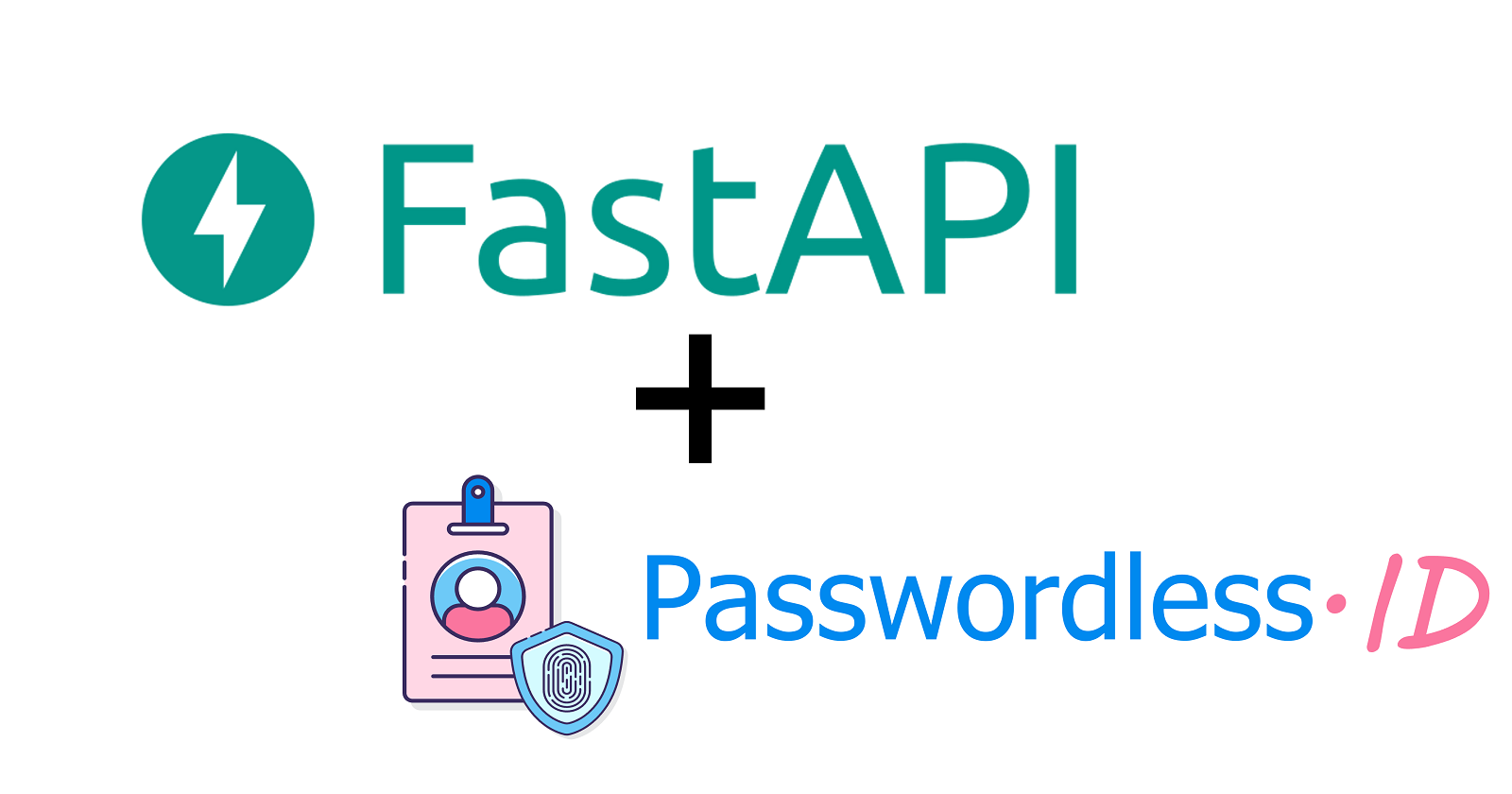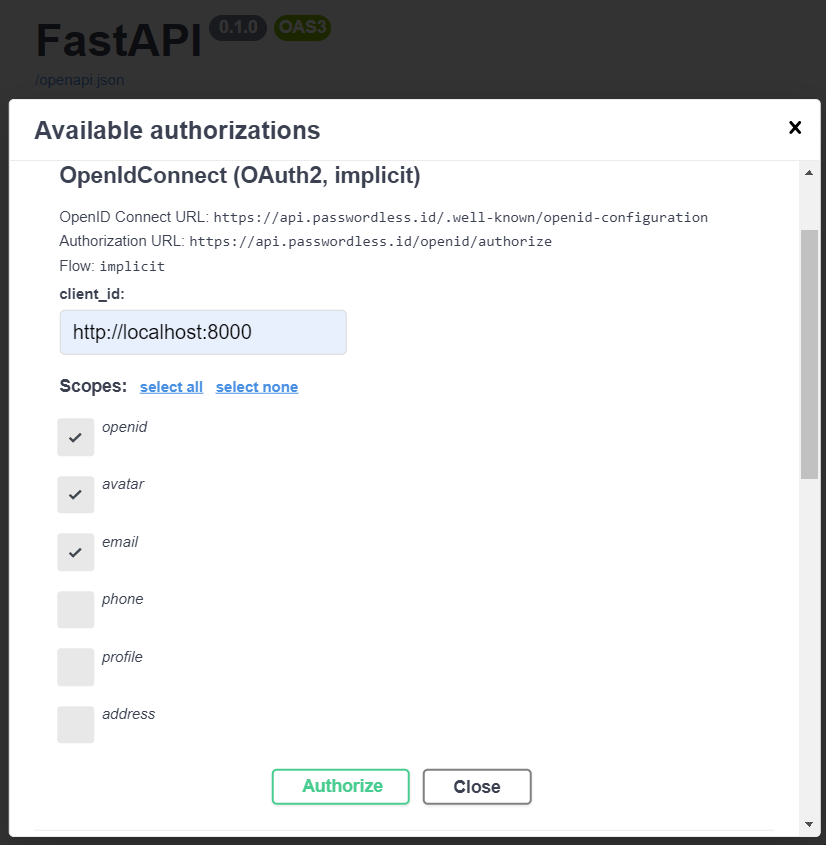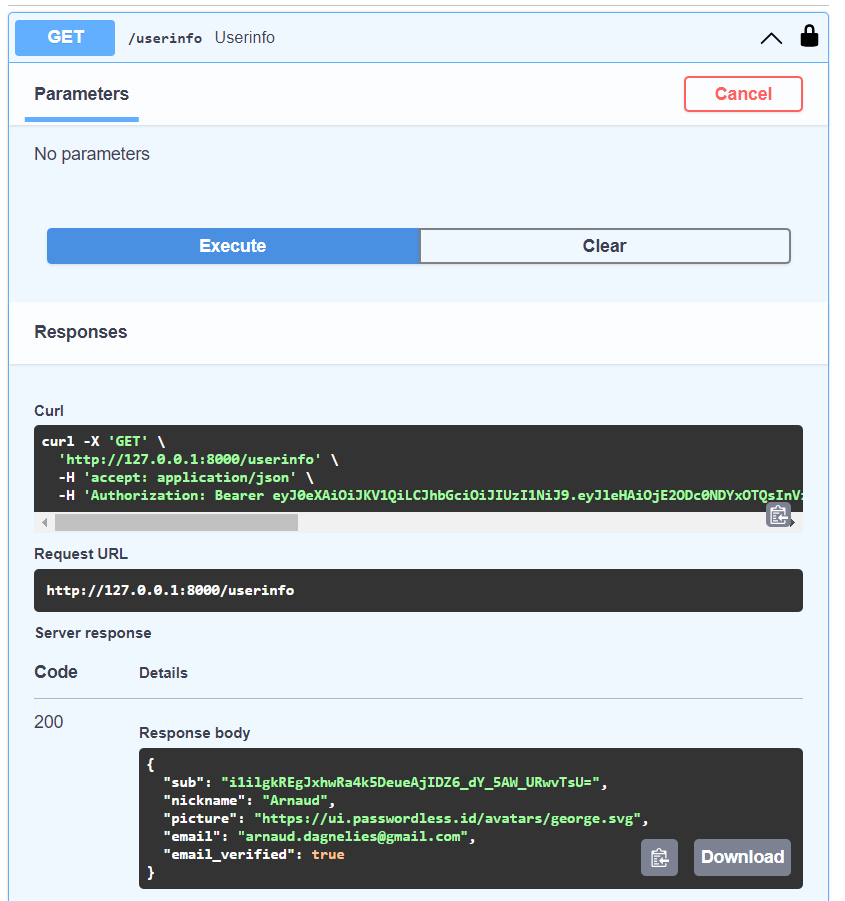This minimal example shows an integration between FastAPI and Passwordless.ID.
To run it: uvicorn main:app
And open http:https://localhost:8000/docs
For authentication, you can pick the implicit flow or the authorization code flow (see section below).
The client_id should be the domain, or more precisely the "origin" where the web app is running.
In our case http:https://localhost:8000.
There is no need to register anything on the Passwordless.ID website, it's a free and public identity provider.
Just provide the origin as client_id and it will take care of the rest.
Once you are authenticated and authorized access, you can return the user information server side.
The whole app is just this handful of lines.
from typing import Annotated
from fastapi import Depends, FastAPI
from fastapi.security import OpenIdConnect
import requests
app = FastAPI()
openid = OpenIdConnect(openIdConnectUrl="https://api.passwordless.id/.well-known/openid-configuration")
@app.get("/userinfo")
async def userinfo(authHeader: Annotated[str, Depends(openid)]):
res = requests.get('https://api.passwordless.id/openid/userinfo', headers = {"Authorization":authHeader})
return res.json()The authHeader contains a short lived access token that will expire after a short while.
It should be used during the sign-in process to fetch the user information (like username or email) and establish a normal user session.
This can be done either by setting a session ID cookie and keeping the user information in memory, using a database, using a self signed JWT or whatever.
How exactly this is done is left to your own preference. Lastly, maintaining your own user session avoids uselessly repating the request and make the experience more snappy for the user.
If you are familiar with OAuth2, you should know that the authorization code is recommended over the implicit flow, which was even deprecated in OAuth 2.1 although it is still widely used in practice.
Using the authorization code flow is possible too, and actually recommended. Simply ignore the client_secret and leave it empty.
That sounds fishy right? Here comes an explanation why the authorization code without secret is still more secure than the implicit flow and why it may or may not be enough for your security concerns.
First, let's understand what is going on in the "authorization code" flow.
- The OpenAPI docs page redirects to an URL like
https://api.passwordless.id/openid/authorize?... - Once the user authenticated and granted permission to see it's profile, it's redirected back to the OpenAPI docs with a
code - Server-side, python exchanges this
codefor an accesstoken - With the
token, you can send one more request to obtain the user profile
In the third step, where the code is exchanged for the access token, the server usually sends a client_secret too, to prove it's really him. This is to protect against attacks where your code was leaked, to prevent the attacker to get the access token.
For Passwordless.ID, this is mitigated by only allowing redirections back to the client_id requested. That already avoids the code being send somewhere else by an attacker tempering with redirect_uri.
Bottom line is that as long as your front-end is not compromised, the code should not get leaked. It is also a "nonce", which means that once exchanged for a token, it is "consumed" and cannot be used again. Lastly, the token too is rather short lived.
Security-wise, the authorization code flow without secret is still better than the implicit flow. While the first exposes an exchange code in the browser'S URL, the latter exposes the token and user profile directly, which would make stealing it much more convinient if your front-end is compromised.
For even better security, we recommend using the authorization code with PKCE. This is similar to dynamically created secrets. Using and verifying a nonce would also be an option since it is supported by Passwordless.ID. Sadly, neither is widely supported by FastAPI nor OpenAPI.


